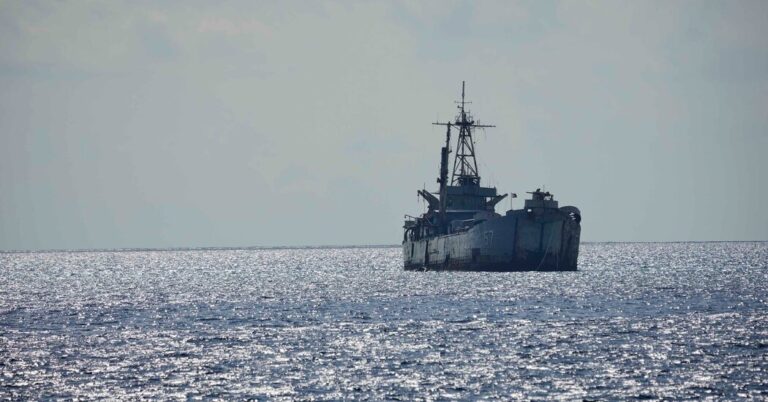Chinese and Philippine vessels collided near disputed islands in the South China Sea on Monday morning, leaving a Philippine Navy sailor “severely injured,” the Philippine military said Tuesday, the latest in a series of maritime clashes that have raised tensions in the vital waterway.
Following a collision between a Chinese ship and a Philippine supply ship near the Spratly Islands, both sides blamed the other for the incident.
Chinese state media said the collision occurred after the Philippine ship “ignored multiple and stern warnings” and engaged in dangerous and unprofessional behavior. The Philippines said Chinese navy, coast guard and naval militia vessels had engaged in “illegal and aggressive actions,” including “ramming.”
US Ambassador to the Philippines Mary Kay Carlson condemned China’s “dangerous actions” and said they had caused “physical injury” and damage to the Philippine ship.
The clash was another demonstration of Beijing’s military expansion in the South China Sea, which is rich in natural resources and crucial for international shipping.
China claims most of the area, but the Philippines, under President Ferdinand Marcos Jr., who took office two years ago, has mounted a stronger fight against Chinese incursions into its territorial waters.
The Philippine military has not disclosed the extent of the sailors’ injuries, but Philippine broadcaster GMA Integrated News reported that one sailor’s finger was amputated and six others were injured, and that China had seized sophisticated firearms and a rubber boat.
An international tribunal ruled in 2016 that Second Thomas Shoal, near the site of Monday’s collision, is within the Philippines’ exclusive economic zone. China has refused to join the tribunal and rejected the ruling.
Less than 200 nautical miles from the Philippine coastline, here sits a crumbling warship called the Sierra Madre, an iconic, rusting vessel with a dual mission: asserting Philippine claims to the land and fending off further Chinese encroachment.
China has stepped up naval patrols in the South China Sea over the past decade to enforce its own borders, and in recent months Chinese militia and coast guard vessels have fired water cannons at Philippine supply ships, destroyed radars and antennas and repeatedly struck the vessels’ hulls.
Manila’s attempts to contain China have brought the Philippines closer to the United States, Canada, Japan and Vietnam, which also has disputes with China over coastal waters.
The United States signed a deal with the Philippines last year to increase the U.S. military presence in the country to its highest level in three decades to counter growing Chinese aggression.
Swee Lee Wee Contributed report.

